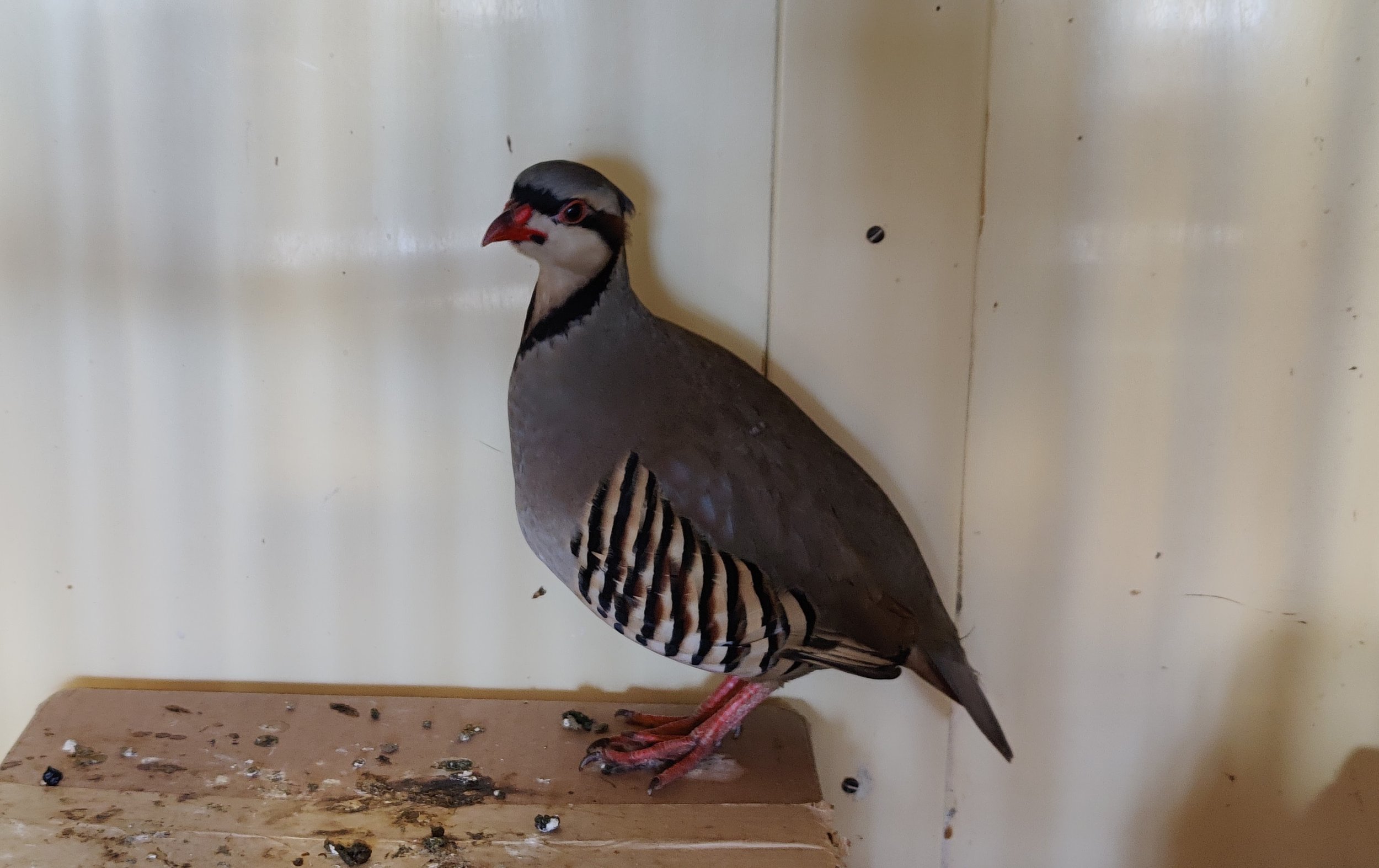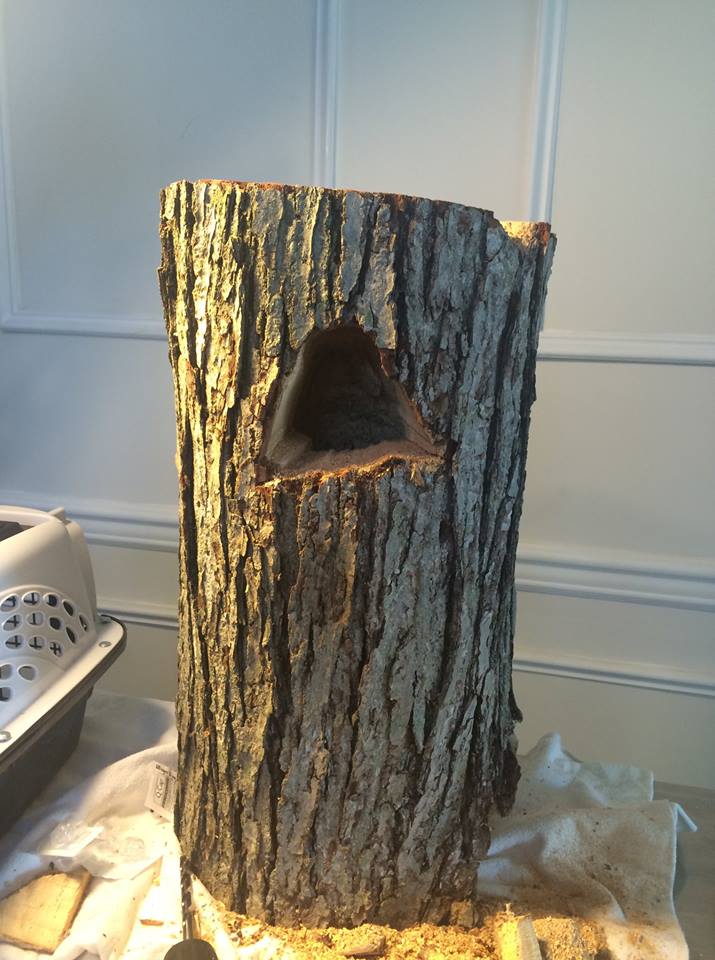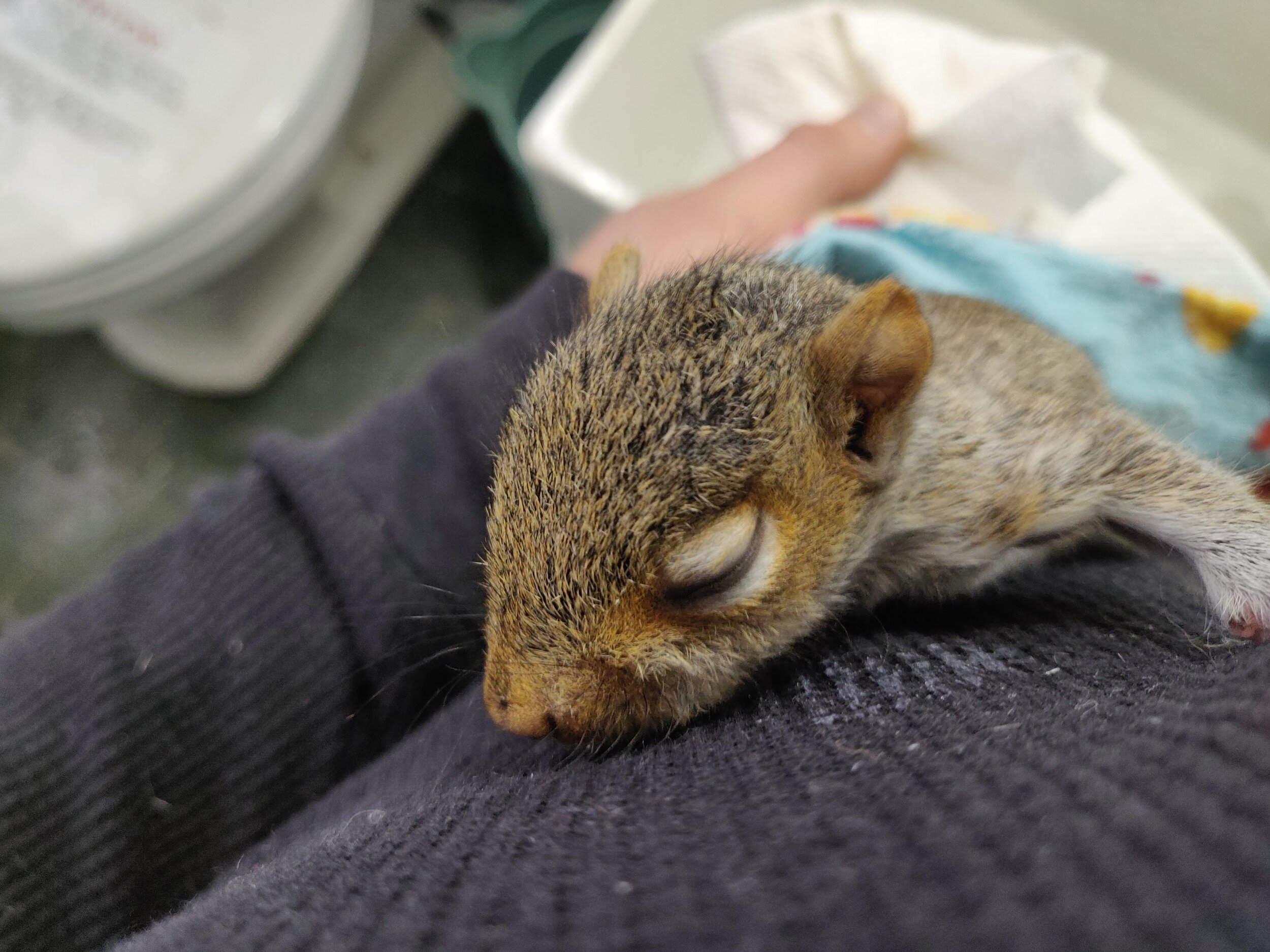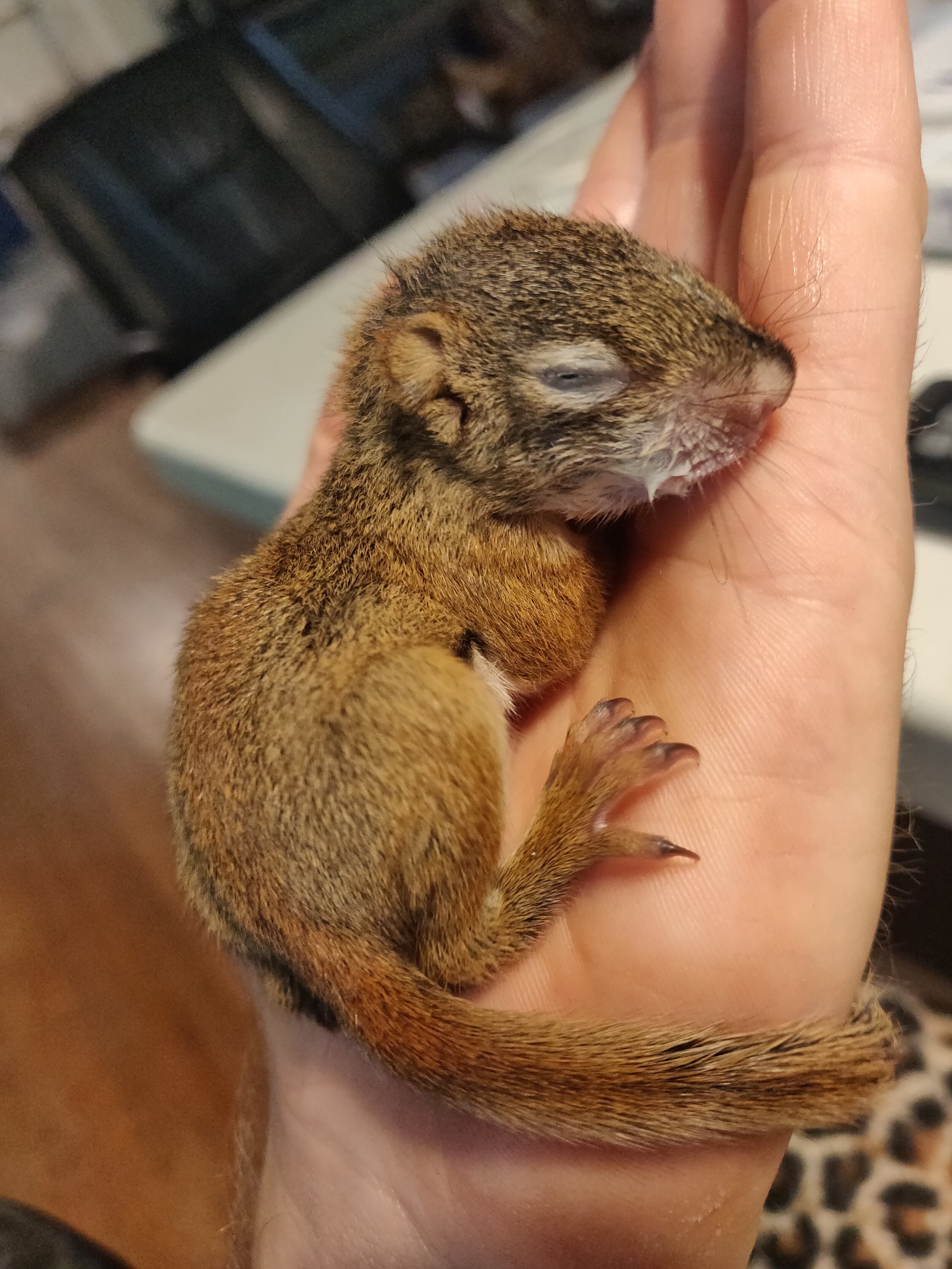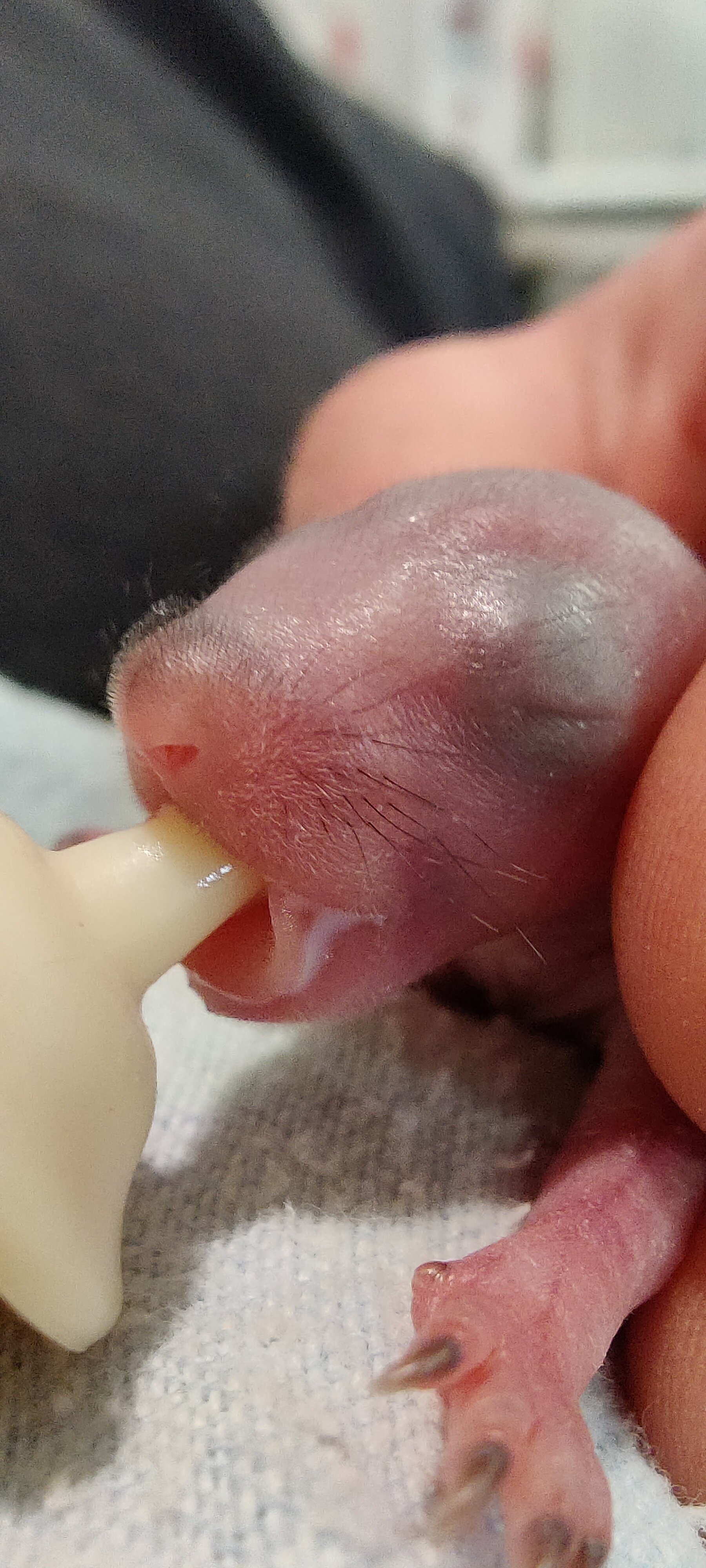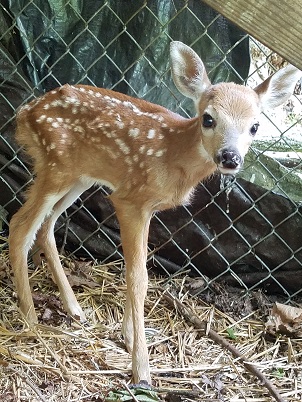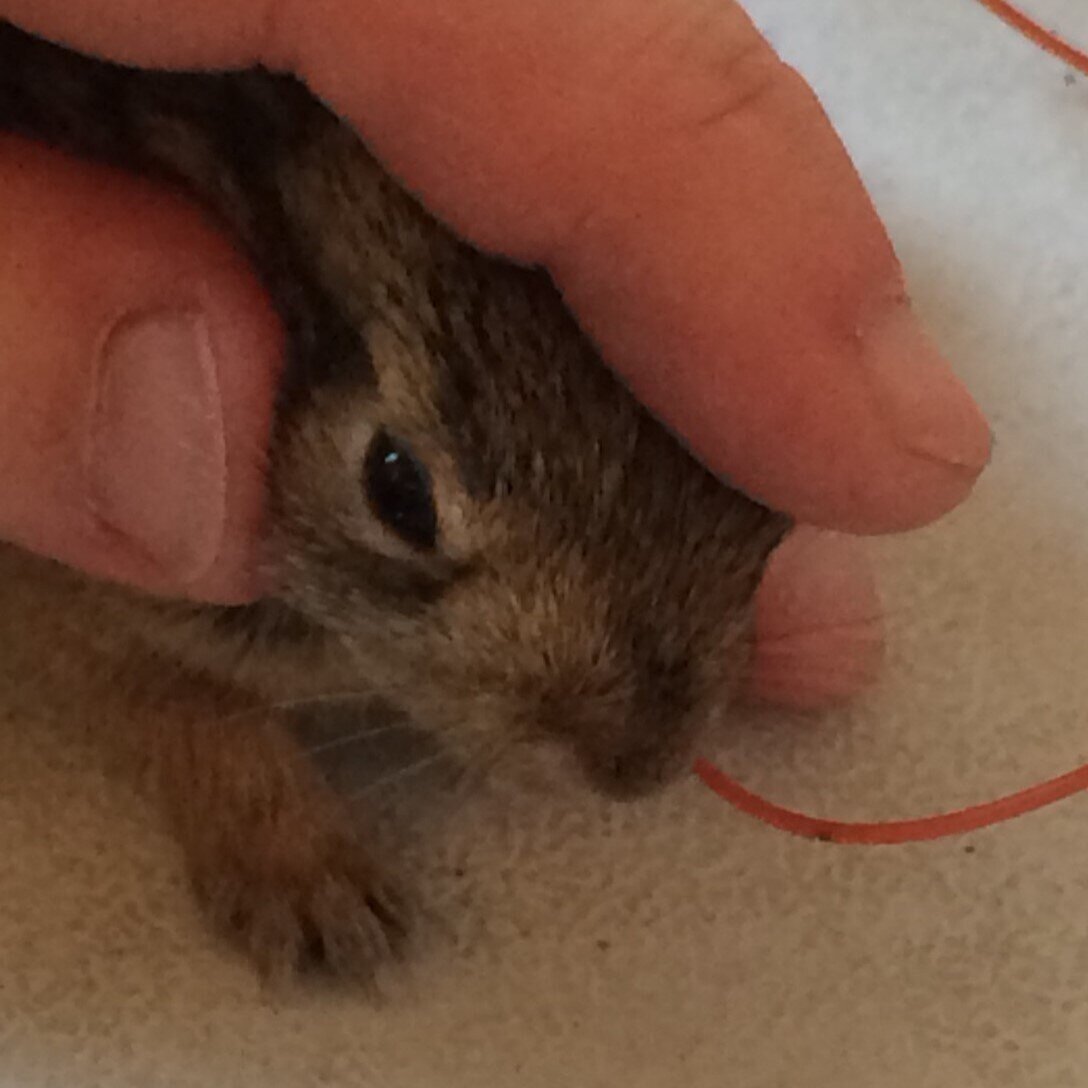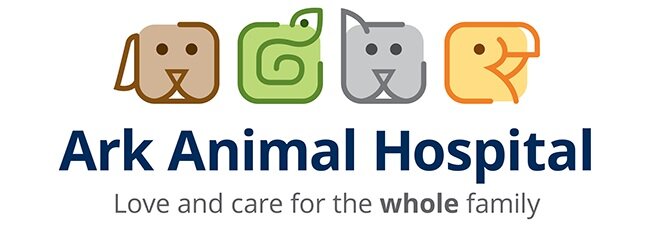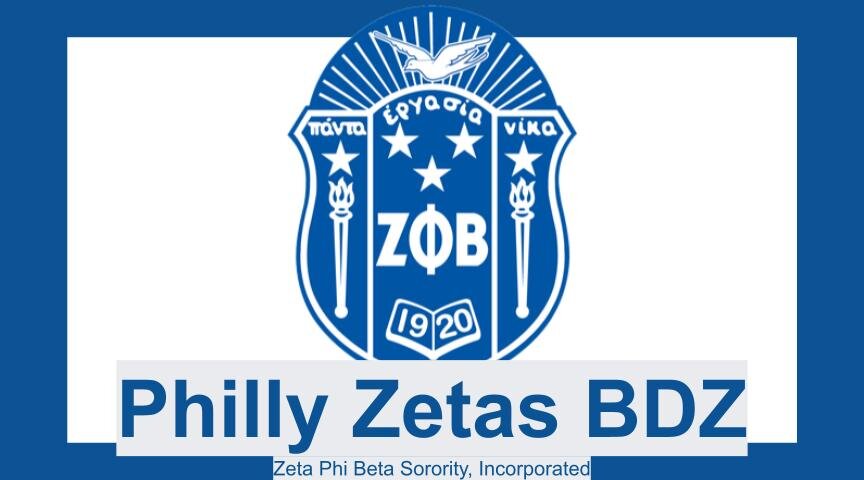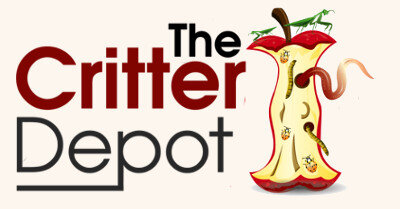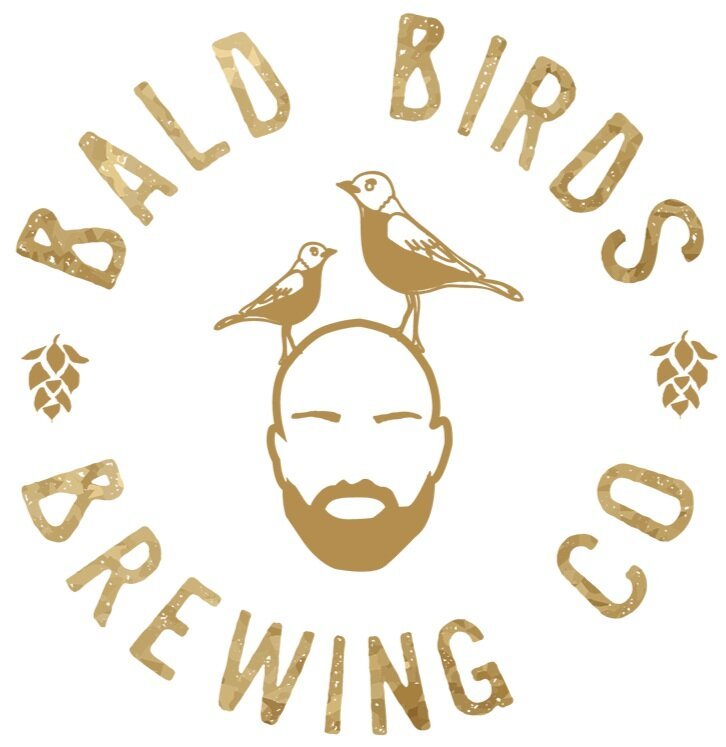We recently admitted this European Starling which was caught on a glue mouse trap covered in oil. In an effort to extract the bird, our well-intentioned neighbor doused it in oil.
If you find a hurt animal caught in or on a trap, please do not try to remove it yourself. Bring the animal, together with the trap, to us for treatment. If it is a sticky trap, apply paper to the exposed parts so the animal does not get further ensnared. At the center, we will use special solvents to carefully, and painlessly, extract the animal.
We carefully removed this starling from the trap. We then gave patient 0081 a series of baths to remove the oil saturating its feathers.
____
Yes, we do admit and treat European Starlings, a “non-native” species. We think starlings deserve our care and consideration, too. Through no fault of their own, they were introduced into this environment by humans. They are here to stay. We have no illusions about controlling their population - the birds we treat and release won’t alter their numbers appreciably, anyhow. Our mission is the patient on the table. We will do whatever we can to reduce its suffering.
Plus, these birds are pretty cool. You may have heard their interesting and varied vocalizations, or you may have seen their spectacular displays. We at Metro Wildlife admire and appreciate them.






